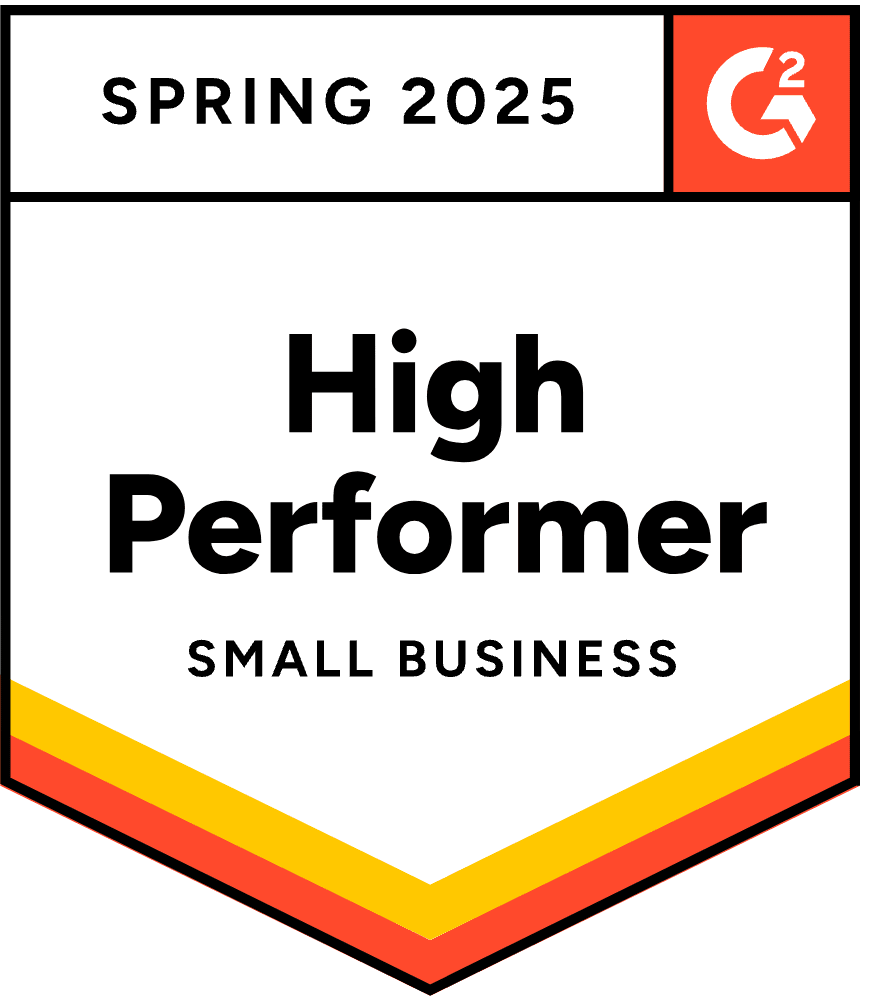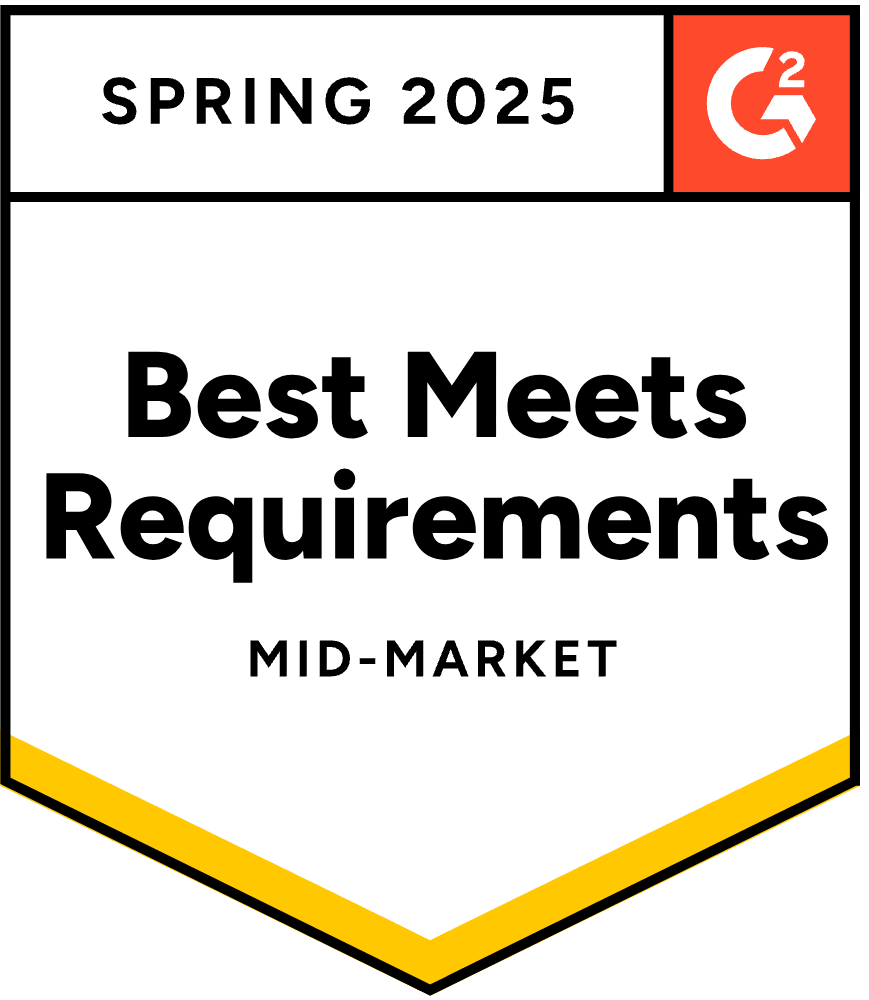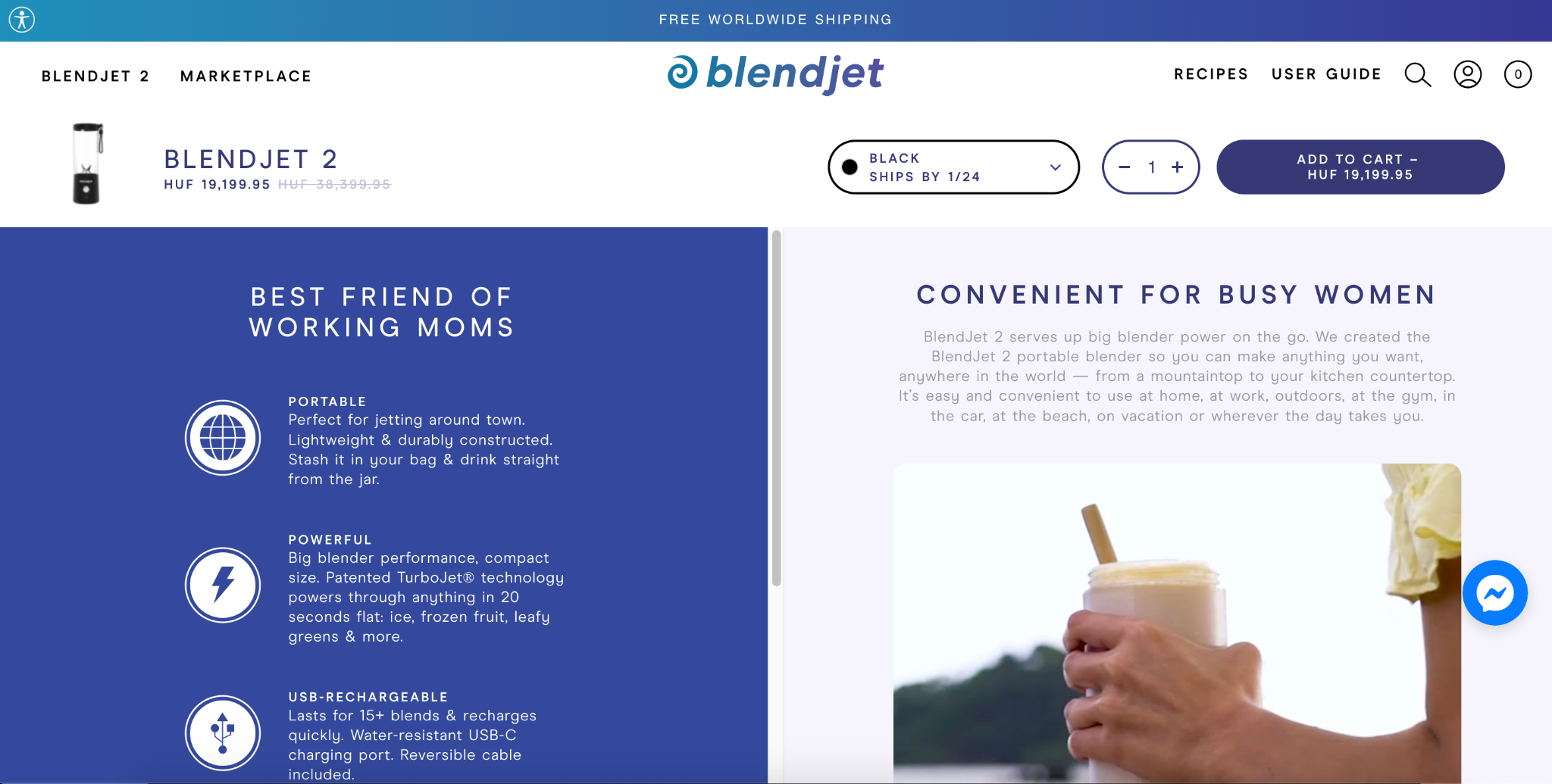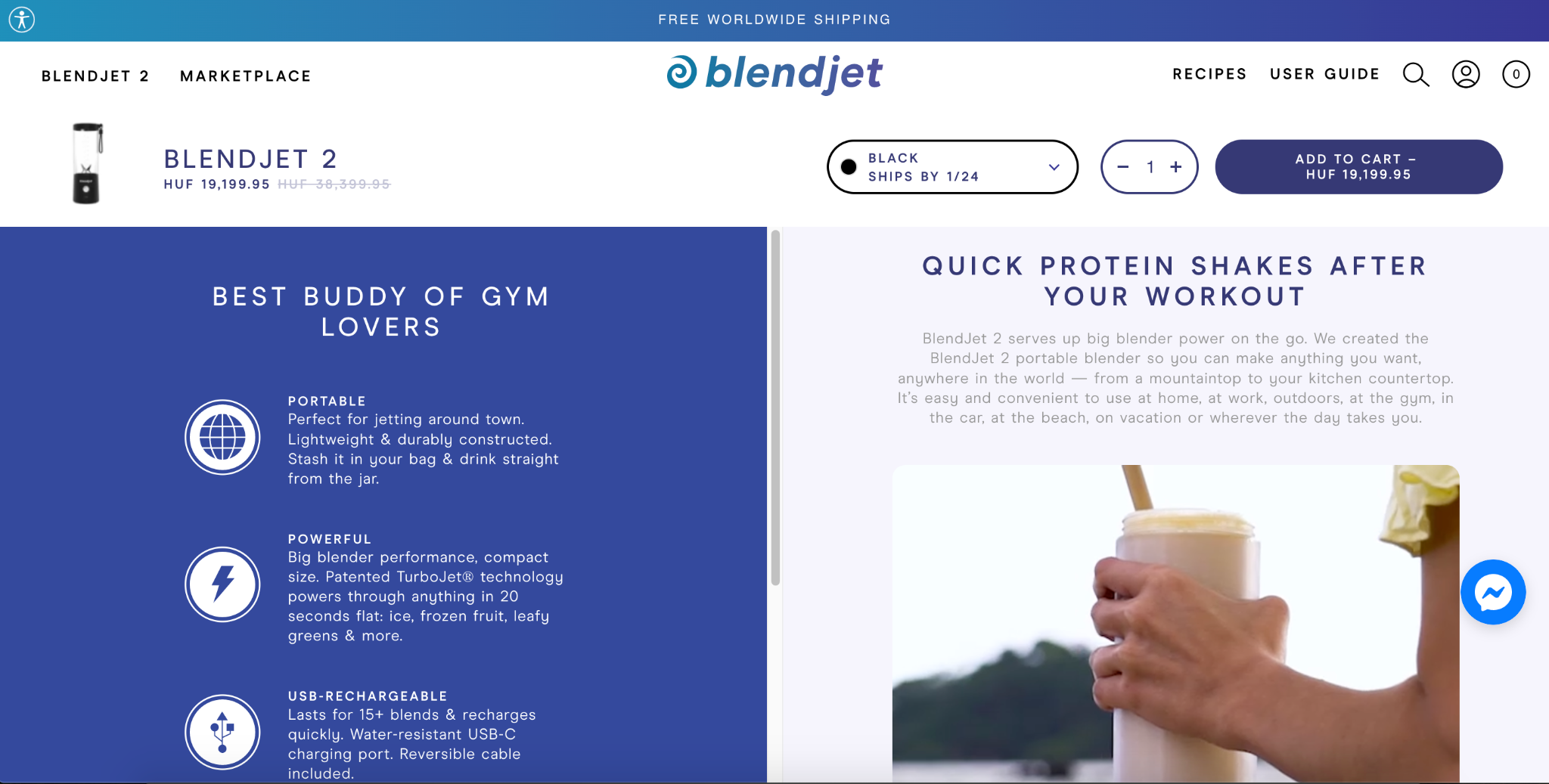- Blog
- Product Page Optimization: A Guide to Optimize for More Sales
Product Page Optimization: A Guide to Optimize for More Sales
Table of Contents
Product pages may be one of the final steps in the customer journey, but they hold the key to converting traffic into loyal customers.
From showcasing product features to nailing search engine rankings, there’s a lot riding on these pages.
In this article, we’ll dive into:
- Why optimizing your product page matters,
- How to structure it effectively,
- 7 best practices for optimization,
- And 5 proven tactics to boost conversions.
Let’s get started!
What is product page optimization?
Product page optimization is the ongoing process of improving individual product pages to boost conversions.
This involves making small changes, testing their impact, and refining the pages to encourage customers to make more purchases.
The aim is to create a user-friendly experience that provides valuable information, helping visitors make quick and confident buying decisions.
Why is product page optimization important?
Optimizing product pages is key for any ecommerce store since users visiting these pages are often close to making a purchase.
They’re familiar with your brand, have found your site, and likely browsed category pages.
So let’s break down how you should optimize it:
- Clear product images and details: High-quality photos and detailed descriptions help visitors make informed decisions.
- Consistency with ads: Ensure your product page copy aligns with your ads for a seamless experience.
- Strong call-to-action (CTA): Encourage purchases with clear, compelling CTAs.
By optimizing product pages, you can increase conversions and customer satisfaction, gain an edge over competitors, and build a loyal customer base for long-term success.
How do you structure a product page?
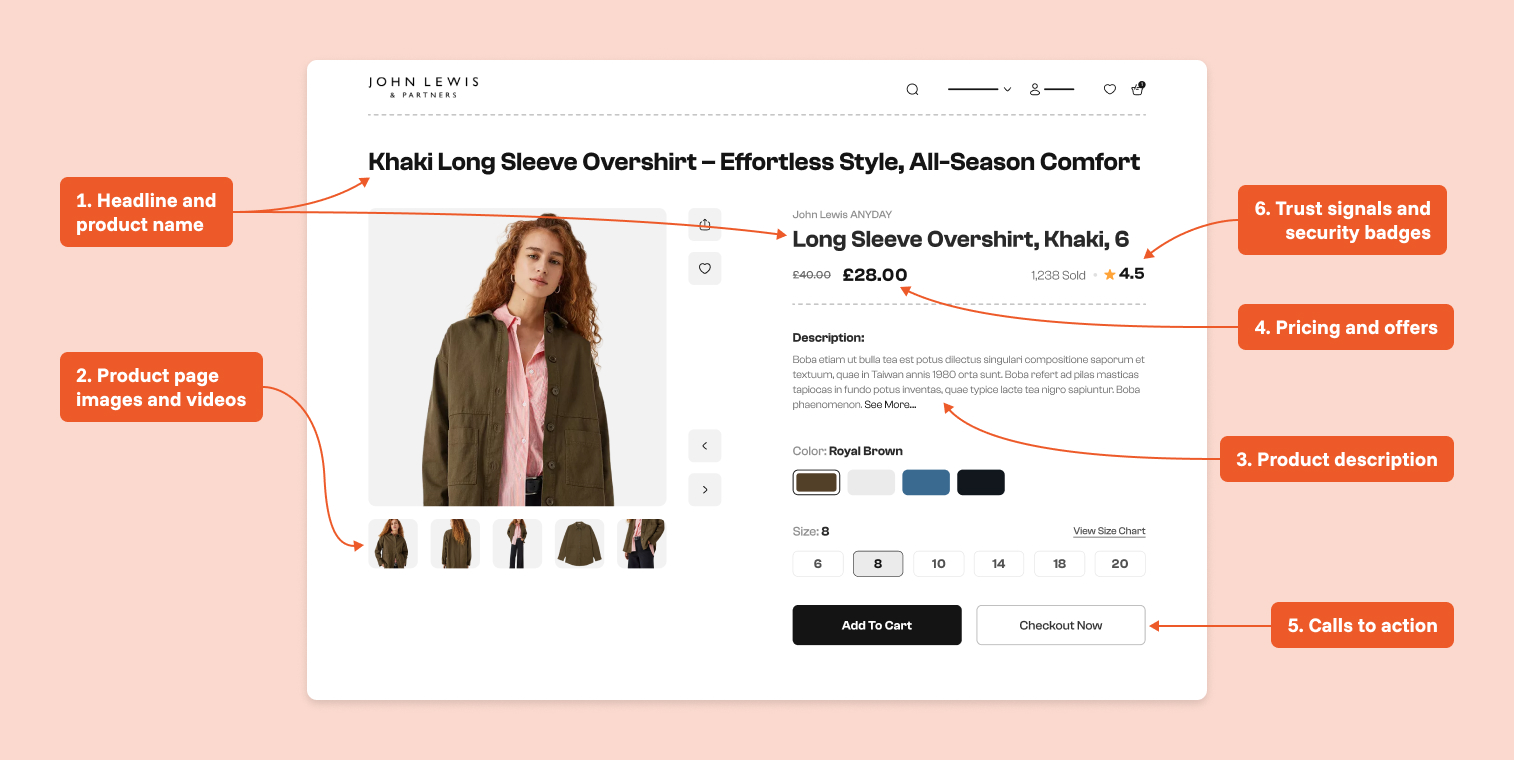
A winning product page generally has a logical flow that introduces the product or software that’s being sold, describes product variants and features, and persuades potential customers to click your CTA button.
Here are the essential parts of template-based and custom product pages.
1. Headline and product name
When it comes to selling an ecommerce product, it’s crucial that you start off strong, and that means a strong product page headline. Make sure that the headline contains your unique selling proposition (USP), which should explain the one thing that makes your product outshine your competitors’ offerings.
2. Product page images and videos
It’s crucial to include high-quality images from multiple angles on your product page. A product schema can further highlight the construction and key features of your product.
Here are some key items to include on your product page:
- High-quality images: Provide multiple angles to offer a comprehensive view.
- Product schema: Detail how your product is constructed and its relevant features.
- Preview video: Invest in a sleek video to offer a dynamic, engaging experience, especially for features that are challenging to explain through images and text alone.
- SEO-friendly meta descriptions: Ensure your images and videos have meta descriptions aligned with your SEO strategy to improve rankings.
- These steps will not only improve the visual appeal but also enhance user engagement and your search visibility.
Here’s our perspective on ecommerce photography, along with some best practices.
3. Product description
Detailed product descriptions are another important piece of your product pages, giving you the chance to highlight key features and benefits.
You should use persuasive language in your product descriptions to convince your visitors that your product really is the best option for them.
You should also keep ecommerce SEO principles in mind while you’re optimizing your product pages, since using the right keywords can ensure you show up on the first page of search engine results and attract more organic traffic.
You can always use the Google Search Console to see where you can improve your site to perform better.
Read here how to write compelling product descriptions.
4. Pricing and offers
Customers definitely expect to see pricing, size, and availability information on your product page, so make sure all the relevant info is easy to find.
It’s also a good idea to provide your shipping information, delivery times, and return policies. You don’t want someone to assume they’re going to get free shipping and then find out they’ll need to pay on the checkout page.
Confusion like that leads to lots of abandoned carts.
5. Calls-to-action
Your calls-to-action are how you move your visitors from a product page to the next step of the customer journey.
First of all, ensure that your call to action buttons stand out and are easily clickable on both desktops and mobile devices.
You also want to use simple, straightforward, and persuasive copy, like “Add to cart” or “Buy now.”
Check out the 10 best practices to optimize your call-to-actions.
6. Trust signals and security badges
Finally, you should display all the relevant trust signals on your product pages. Seeing secure payment icons, SSL certificates, and recognized industry certifications will make your potential customers feel more comfortable ordering from you.
7 best practices to optimize your ecommerce product pages
Now let’s take a look at the 7 best practices that D2C ecommerce brands can use to enhance their product pages.
1. Craft compelling product descriptions
In order to convince someone to buy your products (or to get in the habit of clicking your app icon), you need to be able to tell a story about how what you’re offering will improve your customer’s life.
Captivating product descriptions are a great way to grab the attention of potential customers and make your pitch.
Weber uses an attention-grabbing headline (‘For A Look As Bold As The Food’) above their product description, where they concisely present the benefits of this particular grill model.
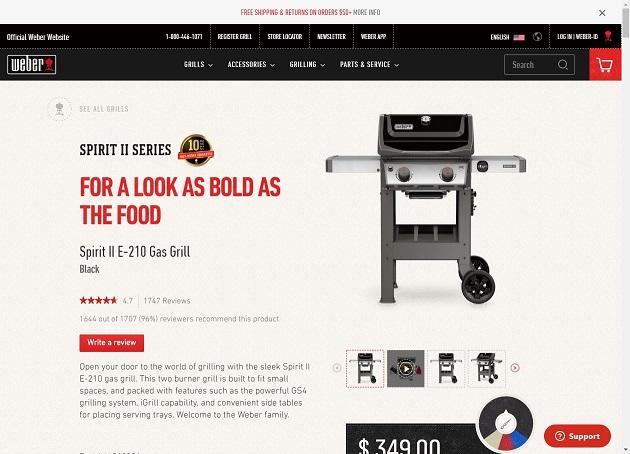
2. Maximize impact with high-quality images
The power of visually appealing product images can do a lot to elevate the effectiveness of your product pages.
When you’re working with large photos, however, it’s always important to ensure that they won’t hurt your loading speed and to conduct mobile optimization to ensure they still look great on smaller devices.
This example from Allbirds uses both lifestyle and descriptive product photos to convey detailed information about their products.
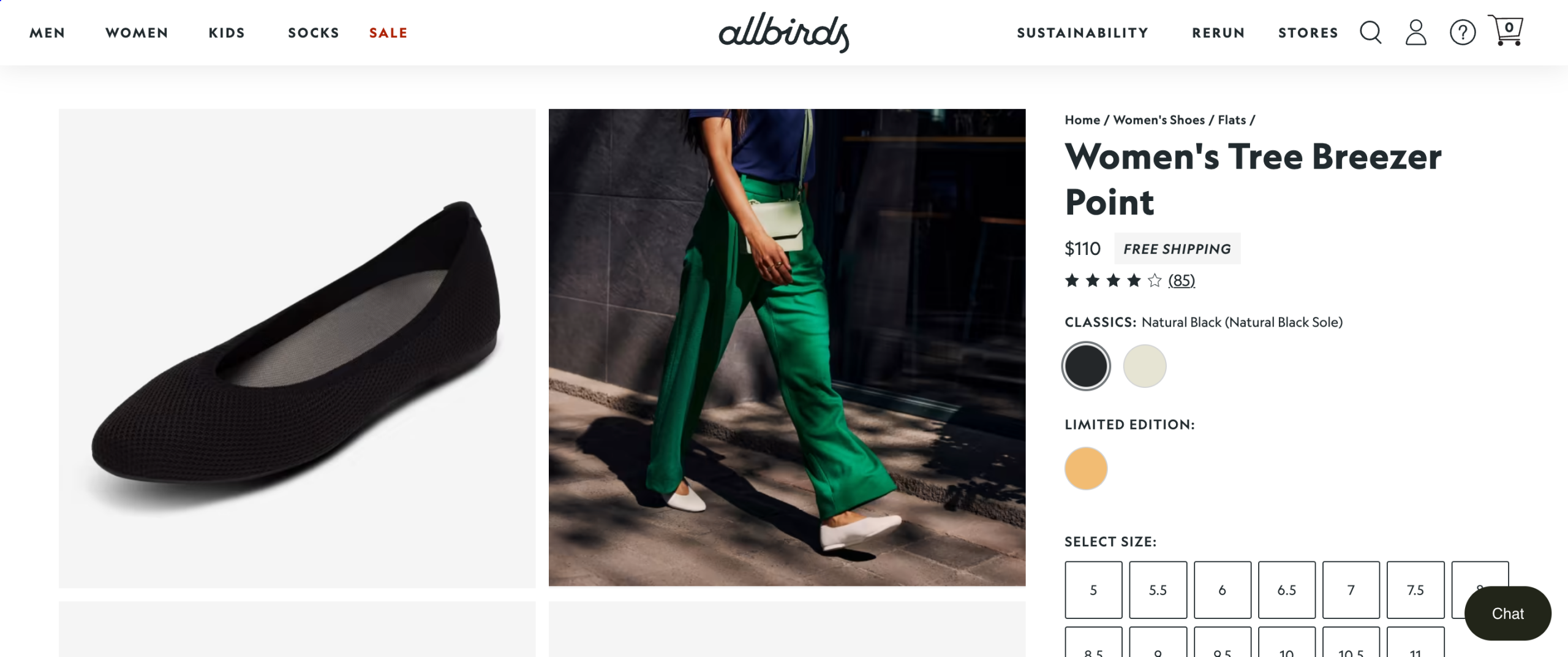
3. Harness the potential of product videos
Videos are a great way to grab a user’s attention and show off product attributes. You can show online shoppers exactly what your product looks like in action, which can help them envision what it would be like to actually have the product.
Here’s an example from Le Creuset that highlights how compelling a product video can be.
4. Create a sense of urgency
Online shoppers often procrastinate, thinking they’ll buy later, but only a few actually return to complete the purchase.
To drive immediate action, create a sense of urgency with limited-time discounts or low inventory messages.
This encourages visitors to buy now rather than wait. Here’s an example of urgency from Booking.com.
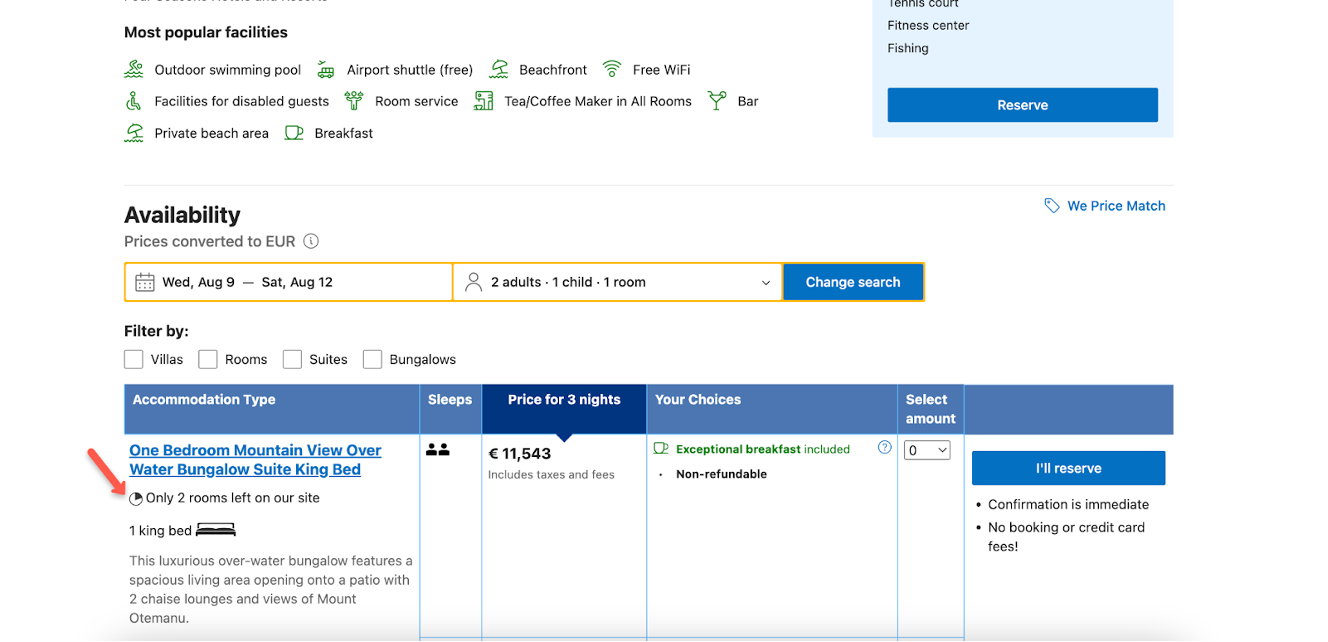
Pro tip: You can increase urgency easily with a sticky bar like the one below.
5. Capitalize on upselling opportunities
Upselling isn’t reserved for online shopping only— it’s a sales tactic that all sorts of businesses use regularly. An upselling strategy involves convincing potential customers to purchase additional or upgraded products, increasing the total value of their order.
Upselling and cross-selling are common strategies for SaaS businesses, too.
For example, you might have a few different app versions at different price points, which gives you the opportunity to encourage users to buy the most expensive version.
Here’s an example from Oh Polly, where they use the phrase “Pairs Perfectly” to upsell on their product pages.
You can get started with this upsell template in your ecommerce store:
6. Use social proof
Using social proof on your product pages is a key factor in driving sales. That’s because first-time visitors often worry about ordering products from an unfamiliar brand, since they can’t be sure about the quality of the products they’ll receive in the mail.
Using a customer review or testimonial element can be a great product page optimization feature, helping you establish credibility and instill confidence in potential buyers.
Saalt incorporates customer feedback on their product pages, allowing visitors to make informed purchasing decisions and fostering deeper trust with the brand.
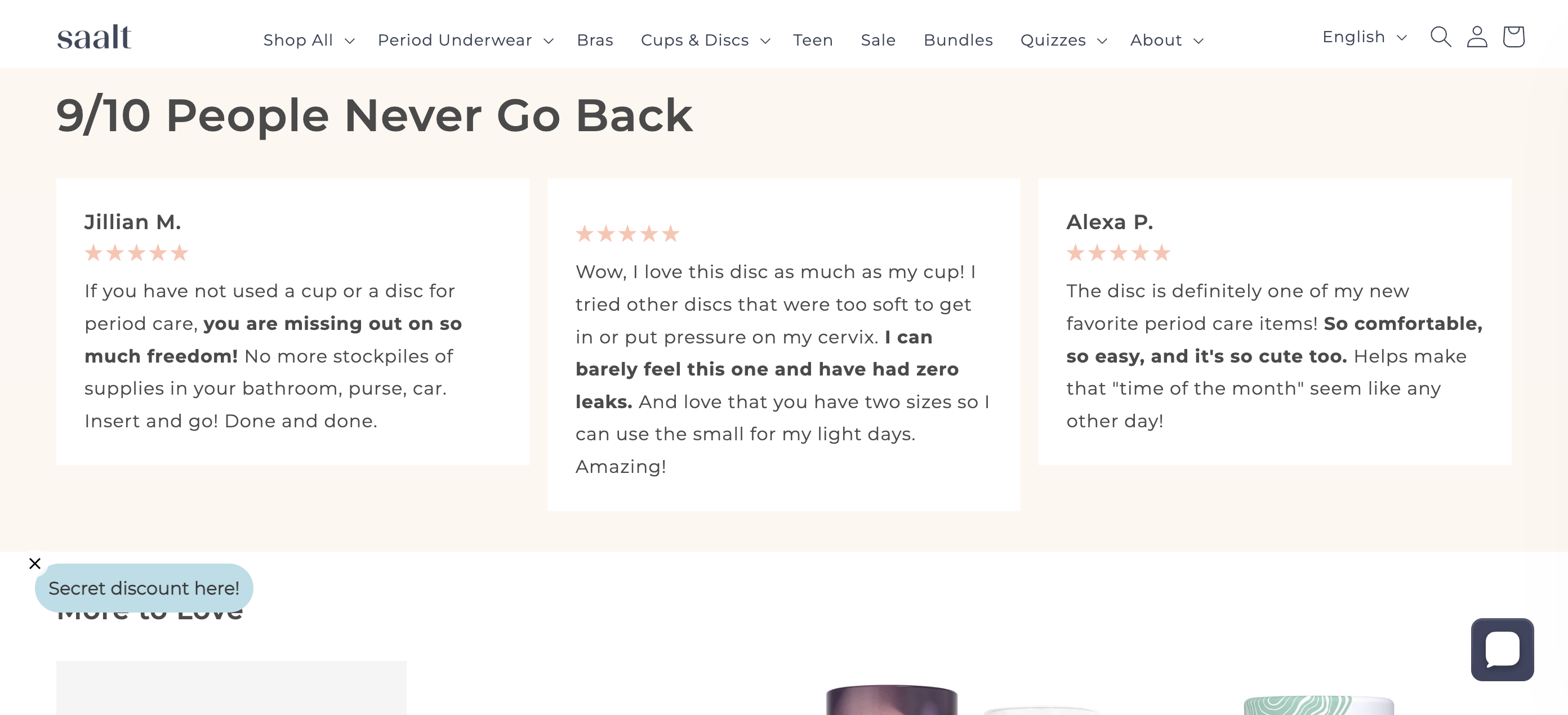
See how Vegetology increased its conversion rates by 6% using social proof at the top of its product pages.
7. Optimize for search engines
Search engine optimization is a crucial part of running a successful ecommerce business, and that certainly applies to product page optimization.
Product page SEO revolves around conducting keyword research and optimizing on-page elements like headings, meta descriptions, and internal links to include relevant keywords.
5 bulletproof tactics from our in-house marketers to boost your product pages
Now, we’re going to bring you 5 tried-and-tested tactics from our in-house marketers to boost your product pages.
Ready? Let’s jump right in!
1. Increase product discovery
Laura, our product marketer says you should work towards increasing product discovery if you don’t want to use discounts. After all, using a product recommendation popup on a product page can help your users find other options easily.
According to Laura, “Discounts may not be necessary for visitors coming from Google Shopping Ads or price comparison sites. Instead, focus on product discovery by promoting trending products in an exit-intent popup, specifically tailored for your Google Ads traffic.”
2. Personalize your product page messaging
Niki, our head of content, thinks personalized messages are product page game-changers. She says, ”You can boost product page conversions by showing personalized messaging for each customer segment. Try tailored product messaging based on the target audience to increase conversion rates by at least 10%.”
In this example from BlendJet, you can see how the company adjusted their messaging to ensure that it’s always relevant for different audiences.
3. Test different value propositions on product pages
Barbi, our content marketer, believes that testing different value propositions can work wonders on your product pages.
She says, “To improve conversion rates and drive more sales, consider testing different value propositions. Focus on benefits rather than features on your product page and use data analysis to identify the most effective unique selling proposition for your visitors and potential customers.”
You can test one particular “spin” on your USP for a little while, or you can test several different spins simultaneously to see which performs the best.
Learn how to conduct A/B testing with OptiMonk’s Dynamic Content & Experiments features.
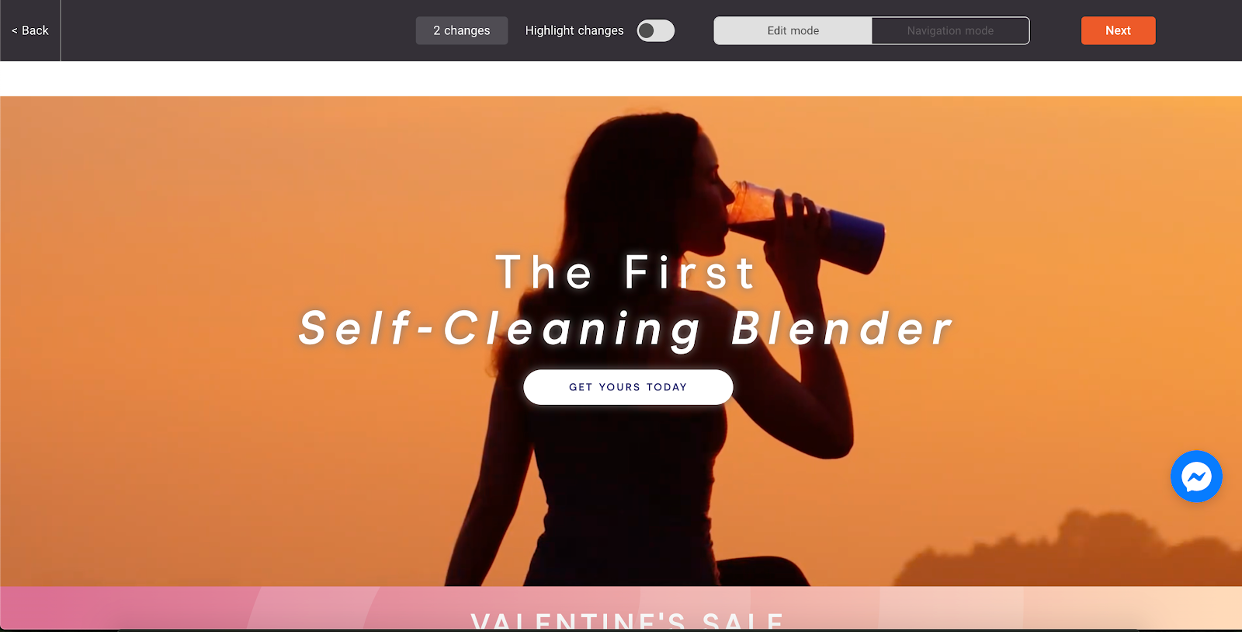
4. Drive more sales with personalized offers for returning visitors
Anna, our marketing manager, says that you should use personalized offers as a way of saying thank you to your returning visitors. His advice to ecommerce stores? “Boost customer loyalty by promoting exclusive deals and using their first name to make them feel special.”
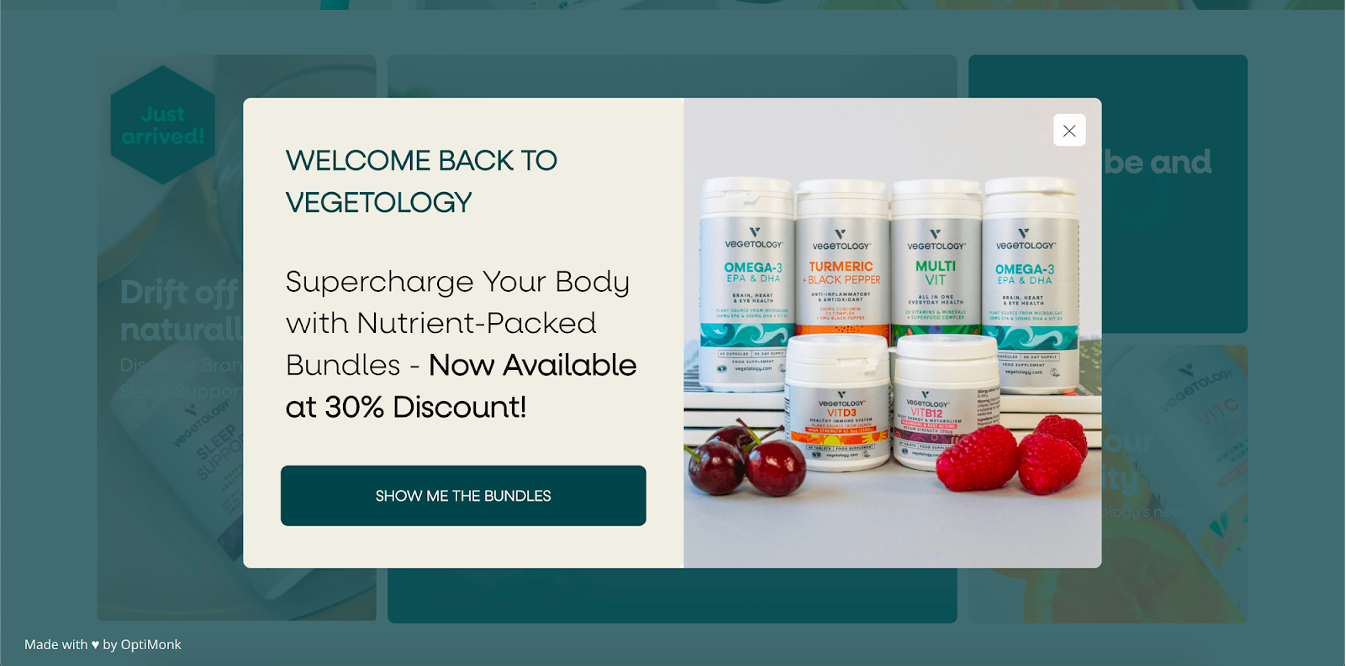
Organically growing your customer base with ideas like this helps you avoid relying on paid user acquisition.
Learn how to set up offers like these here.
5. Remind product page abandoners what they’re missing
Sári, our social media expert, says that online stores should definitely be using exit-intent popups to win back visitors who are just about to abandon a product page.
“Recover lost sales from abandoning visitors with exit-intent popups reminding them of their viewed products and offering personalized incentives,” he says.
Every conversion you save using an exit-intent popup is a bonus! Learn how to set them up using this guide.
5 best tools for product page optimization
If you’re ready to get into product page optimization in a serious way, you’ll need the right tools.
Let’s check out five of the best options.
1. OptiMonk
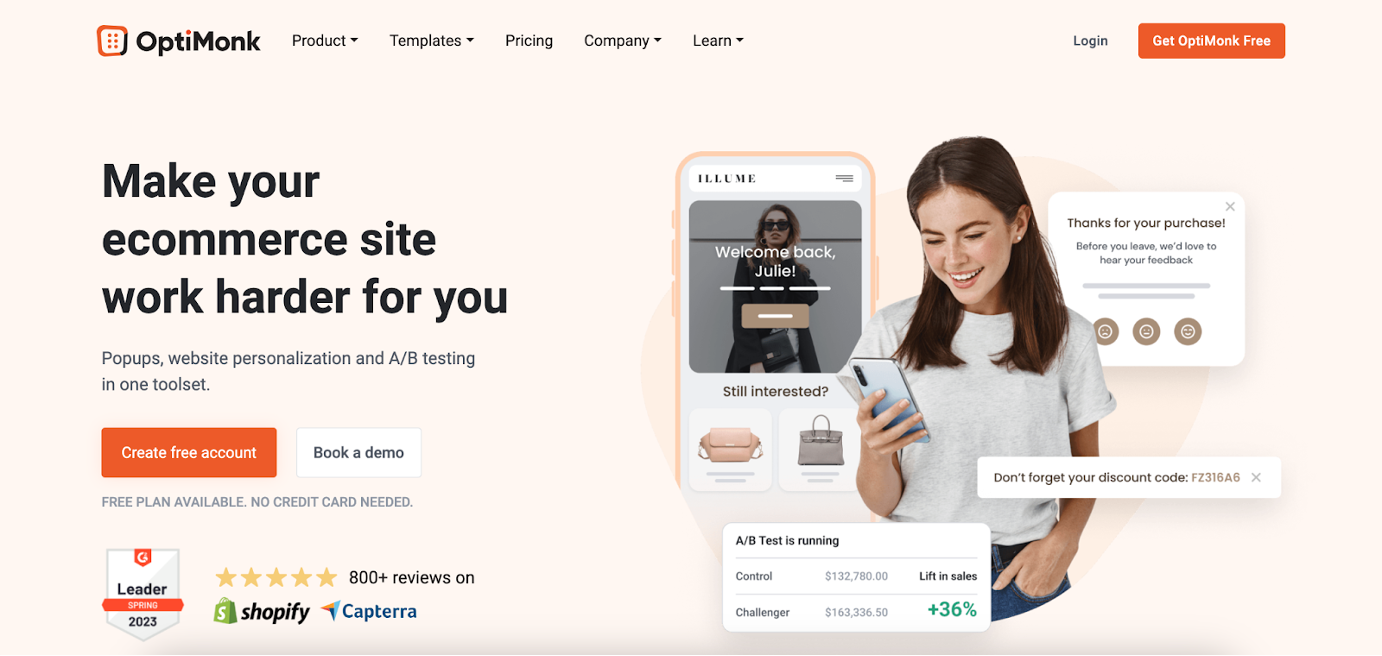
OptiMonk is an all-in-one conversion optimization platform designed specifically for ecommerce businesses. It lets you create high-converting popups, sticky bars, embedded messages, and AI-powered product page experiences all without touching code.
With powerful segmentation and personalization features, you can:
- Capture leads with list-building campaigns and gamified popups
- Reduce cart abandonment using exit-intent offers and countdown timers
- Increase conversions on product pages with tailored messages based on visitor behavior or traffic source
OptiMonk integrates seamlessly with Shopify, WooCommerce, BigCommerce, and other major platforms, making it easy to optimize custom product pages and mobile experiences.
Pricing: Freemium available; paid plans from $29/month.
2. Hotjar
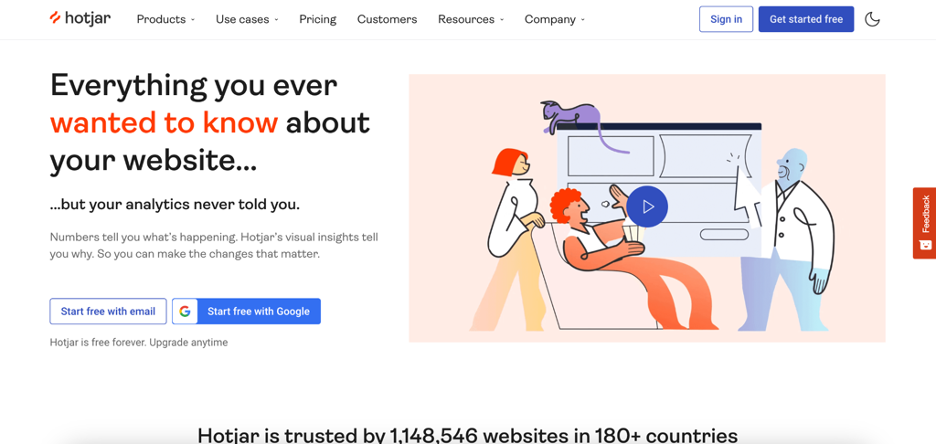
Hotjar is a robust behavior analytics and user feedback tool that shows you how visitors interact with your product pages through:
- Heatmaps to visualize clicks, scrolls, and attention hotspots
- Session recordings to watch real user journeys and spot friction points
- Surveys and feedback widgets to hear directly from users about what’s working—and what’s not
It’s especially helpful for identifying usability issues on mobile devices, improving content layout, and guiding layout decisions on custom product pages.
Pricing: Free basic plan available; paid plans start at $39/month.
3. Optimizely
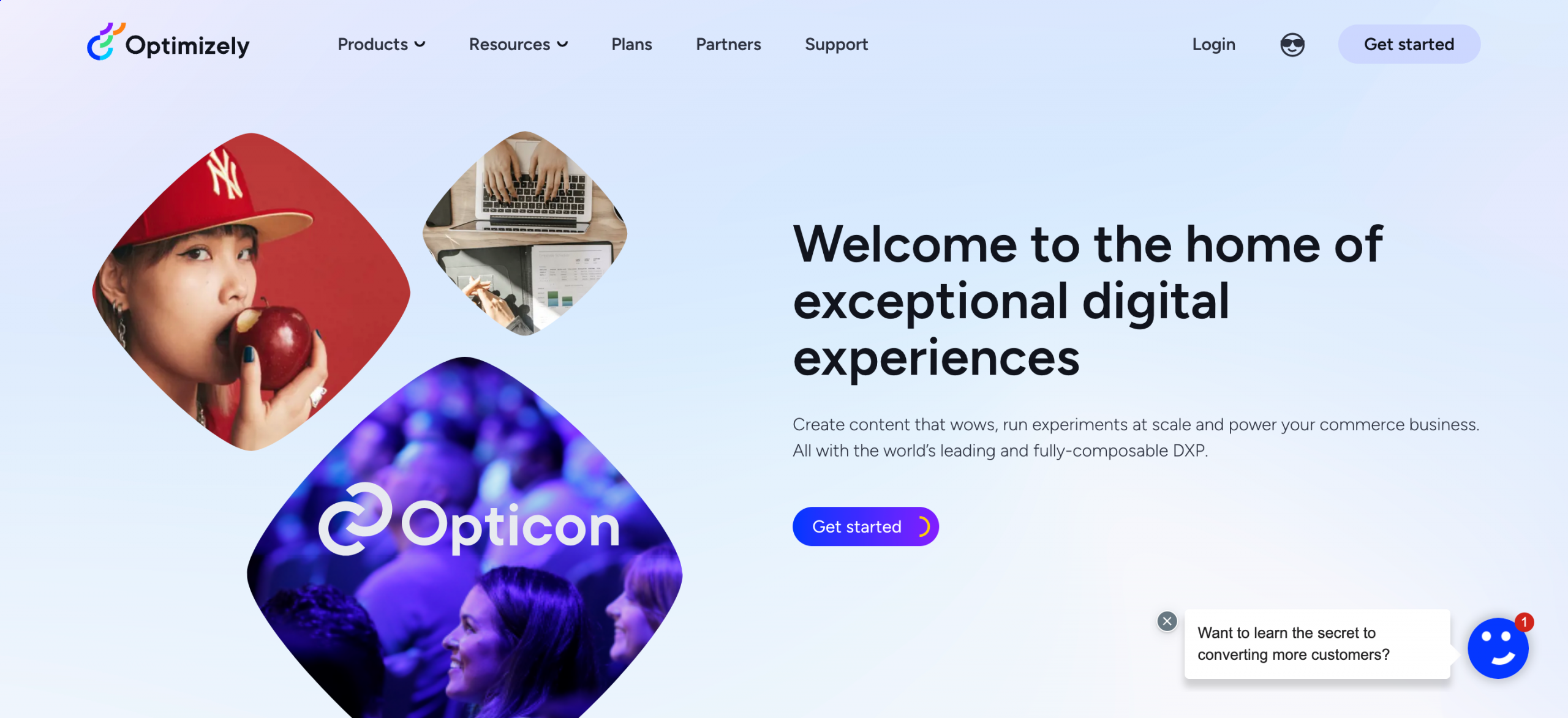
Optimizely is a world-class digital experimentation and A/B testing platform used by enterprises to test and optimize web experiences, including product pages.
It allows ecommerce marketers and developers to:
- Run A/B and multivariate tests on headlines, descriptions, CTAs, layouts, and more
- Use advanced audience targeting and personalization to serve different experiences to different segments
- Measure performance with statistically sound analytics
Great for optimizing both mobile and desktop versions of custom product pages, Optimizely is ideal for data-driven teams with experimentation capabilities.
Pricing: Custom pricing based on business size and feature requirements.
4. YotPo
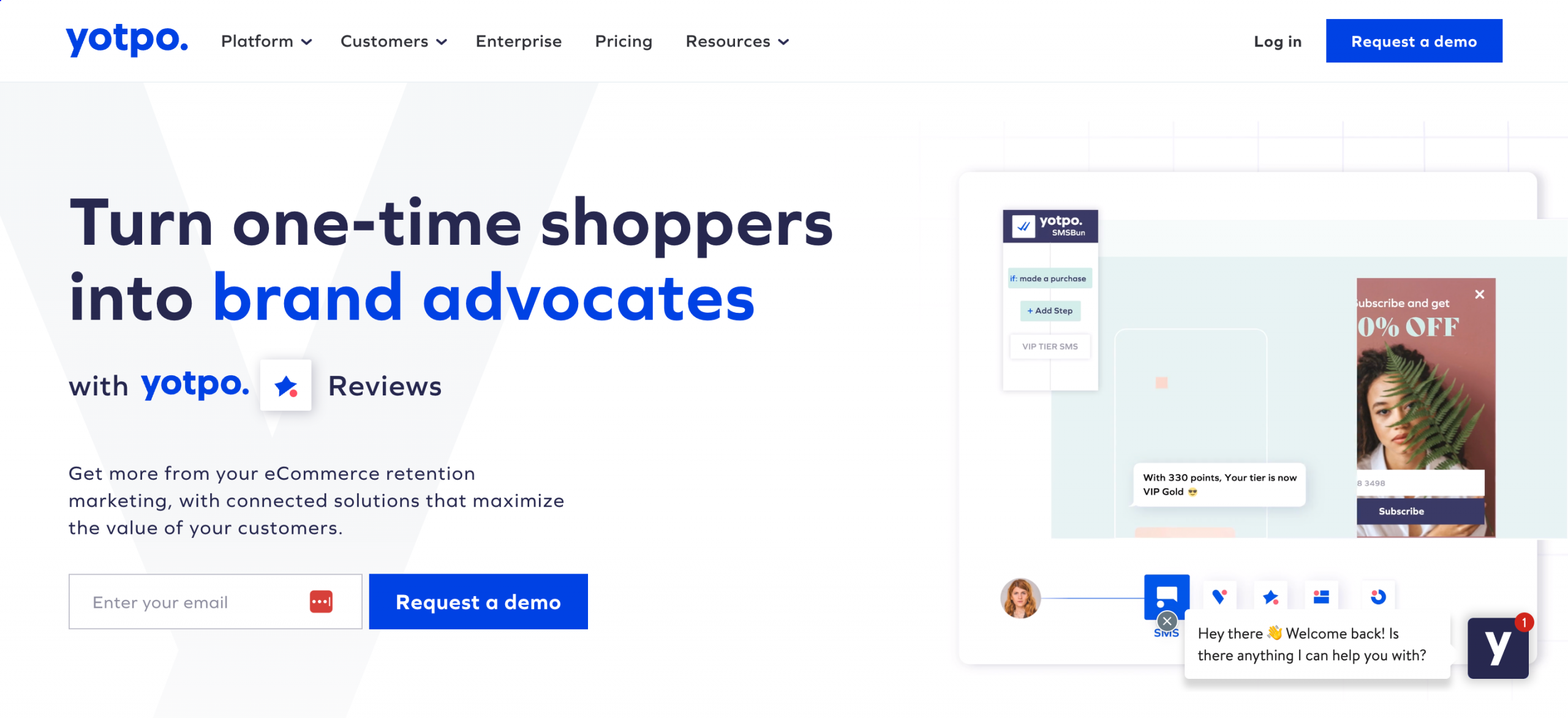
YotPo helps ecommerce brands harness the power of user-generated content (UGC) to boost credibility and trust on product pages.
With YotPo, you can:
- Collect and display verified customer reviews, ratings, and Q&A directly on your product pages
- Add photo and video reviews to make your pages more authentic and engaging
- Use loyalty programs, SMS marketing, and referrals to build a community of repeat customers
It’s especially effective in building trust for new visitors and increasing conversions on mobile and custom product pages.
Pricing: Varies by feature set and business size. Free plan available with core review features.
5. Unbounce
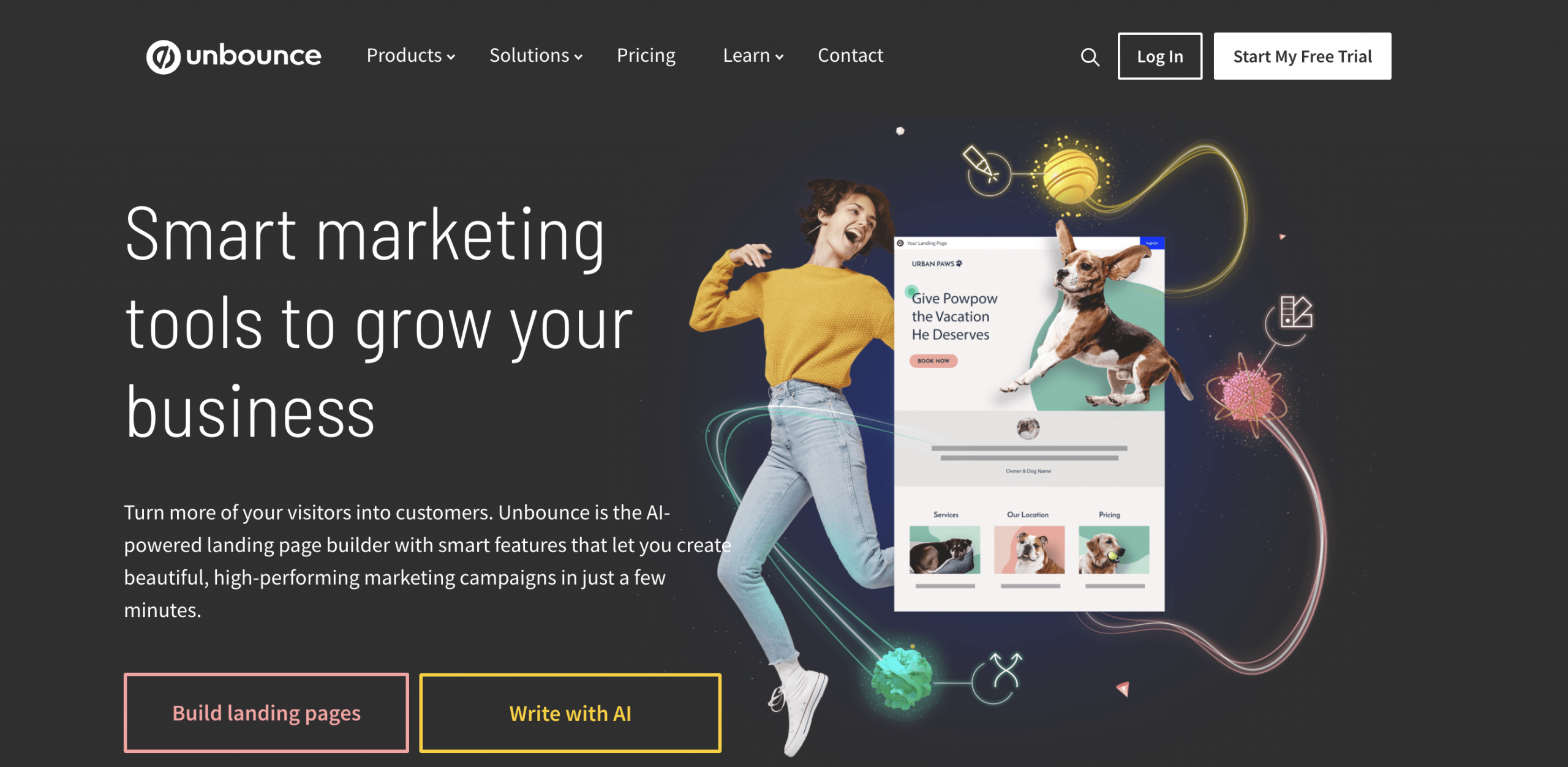
Unbounce is a powerful landing page and conversion toolkit that lets you build high-performing, custom product landing pages with ease.
Key features include:
- A drag-and-drop builder with mobile-responsive templates
- AI copy generation and Smart Traffic, which automatically routes visitors to the highest-converting page variant
- Built-in A/B testing and integration with tools like Google Ads, Shopify, and HubSpot
While not designed specifically for ecommerce, Unbounce is perfect for campaign-specific product pages that require agility, design freedom, and speed to market.
Pricing: Starts at $99/month; includes a free trial.
FAQ
How do I optimize product pages for mobile devices?
To optimize product pages for mobile devices, ensure fast load times, responsive design, and easily tappable buttons. Use compressed, mobile-friendly images and keep important elements like product titles, CTAs, and prices visible without excessive scrolling.
A smooth experience on mobile is essential for effective product page optimization, as a growing share of ecommerce traffic comes from smartphones and tablets.
What are custom product pages and when should I use them?
Custom product pages are tailored landing pages built for specific campaigns, audiences, or channels (like Google Shopping or Facebook Ads). They differ from standard template-based product pages by offering more personalized content, layouts, or messaging.
You should use them when you want to maximize relevance and conversion rates for segmented audiences.
How do detailed product descriptions help boost conversions?
Detailed product descriptions reduce uncertainty and build trust, two of the biggest barriers to purchase. When visitors clearly understand what the product is, how it works, and how it benefits them, they’re more likely to feel confident hitting “Add to Cart.”
A well-written description can also address common objections, highlight unique selling points, and guide the shopper toward a decision, all of which increase the likelihood of conversion.
Wrapping up
We hope you’ve gained some valuable insights about product page optimization. When you’re selling ecommerce products, the last thing you need is a generic product page that turns lots of users away… what you need is stunning, high-converting custom product pages.
After all, you’ve spent lots of time and money building a conversion funnel that gets potential customers to your product pages. You don’t want to stumble at the final hurdle!
If you’d like to give any of these product page optimization strategies a try, sign up for OptiMonk today and start using our award-winning software to perfect your product pages.
Migration has never been easier
We made switching a no-brainer with our free, white-glove onboarding service so you can get started in the blink of an eye.
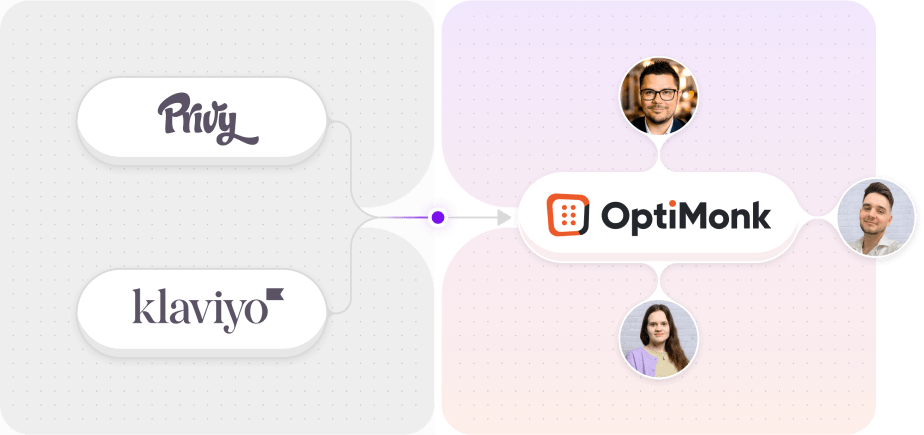
What should you do next?
Thanks for reading till the end. Here are 4 ways we can help you grow your business:
Boost conversions with proven use cases
Explore our Use Case Library, filled with actionable personalization examples and step-by-step guides to unlock your website's full potential. Check out Use Case Library
Create a free OptiMonk account
Create a free OptiMonk account and easily get started with popups and conversion rate optimization. Get OptiMonk free
Get advice from a CRO expert
Schedule a personalized discovery call with one of our experts to explore how OptiMonk can help you grow your business. Book a demo
Join our weekly newsletter
Real CRO insights & marketing tips. No fluff. Straight to your inbox. Subscribe now
Barbara Bartucz
- Posted in
- Ecommerce
Partner with us
- © OptiMonk. All rights reserved!
- Terms of Use
- Privacy Policy
- Cookie Policy

